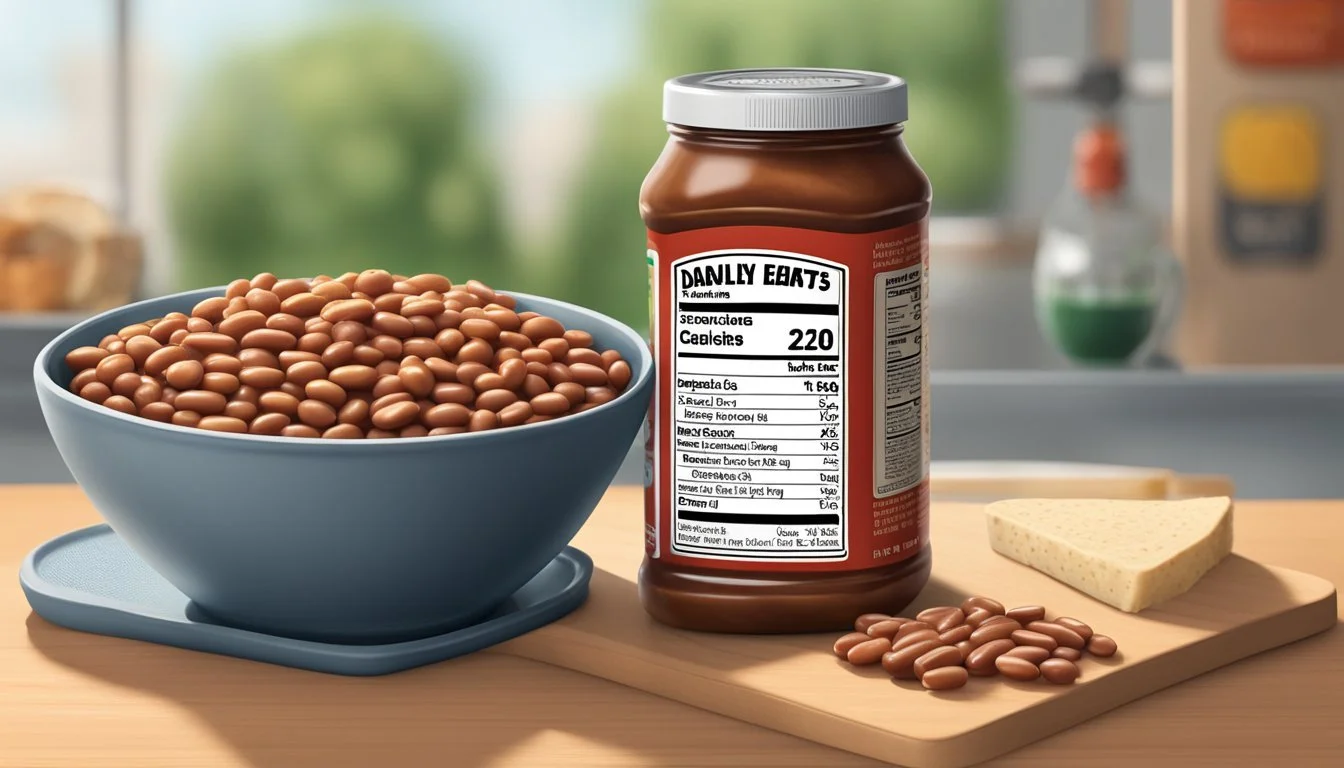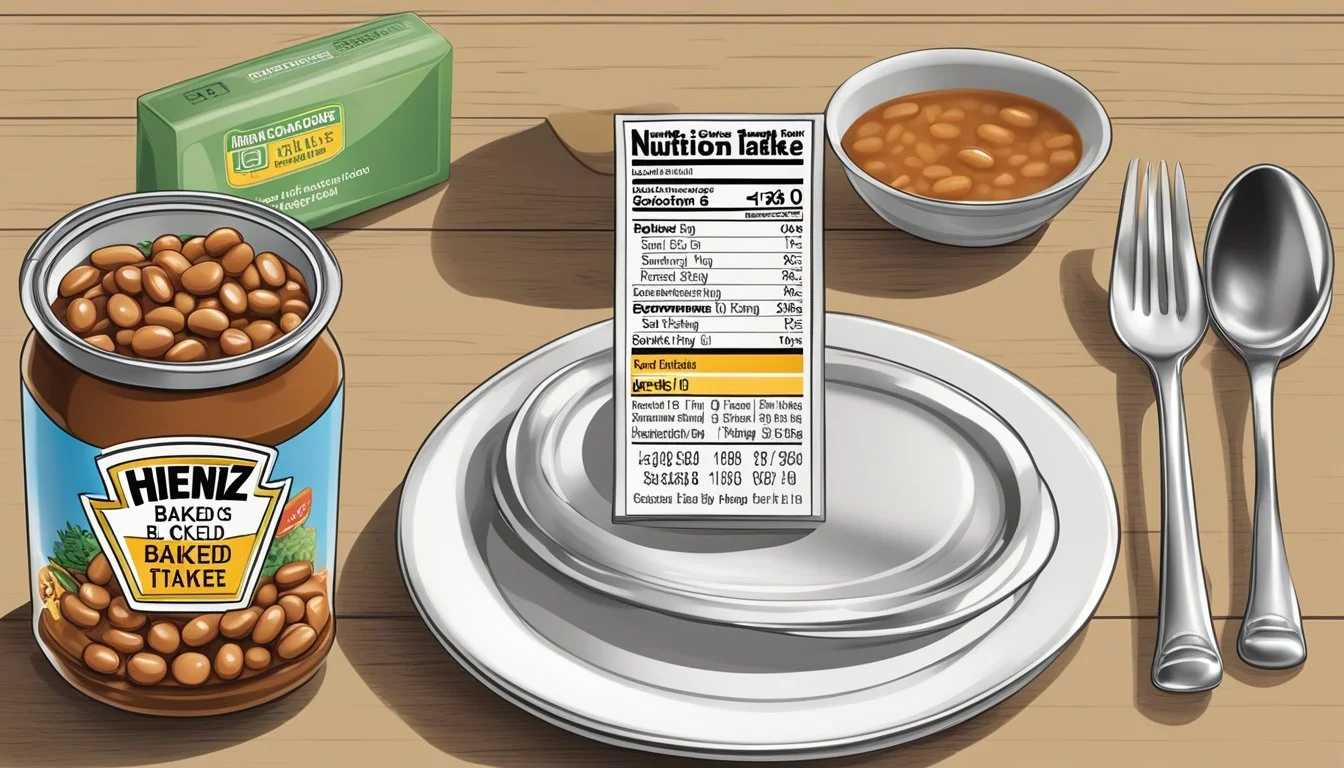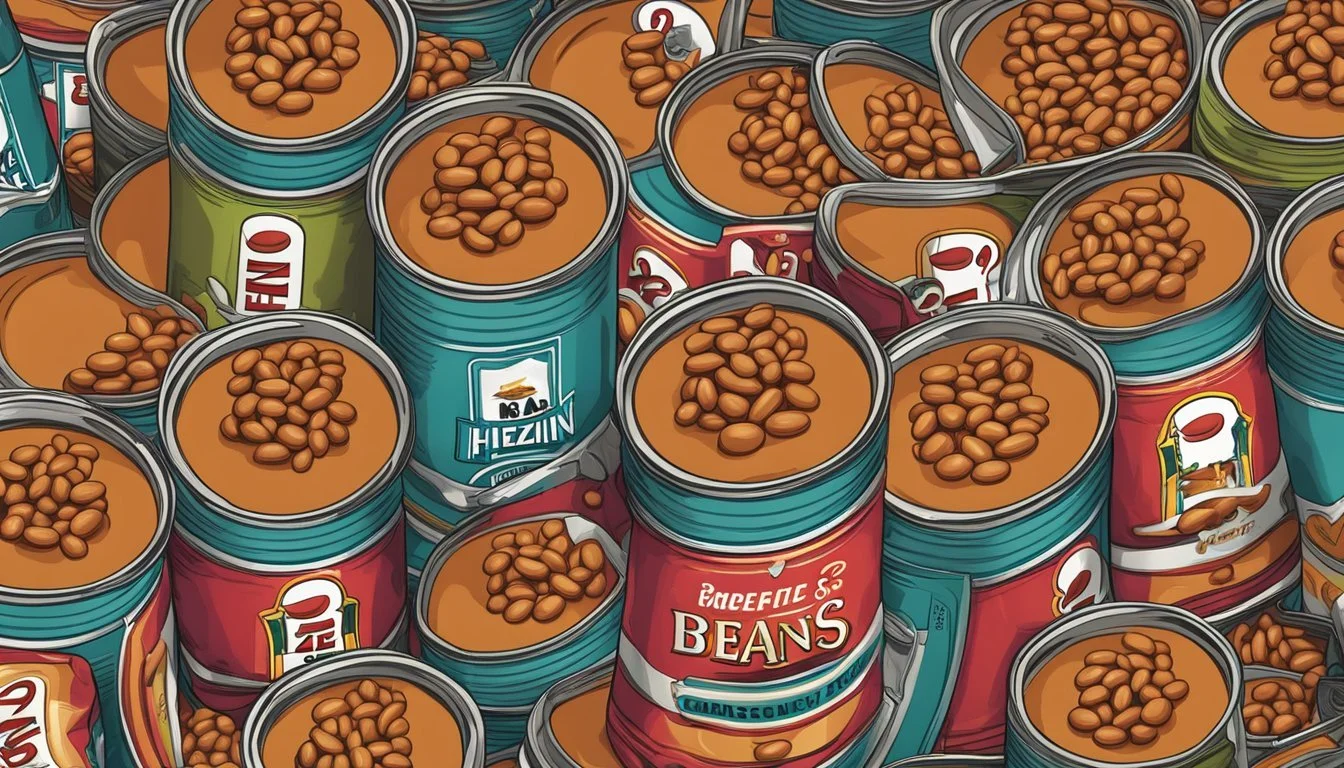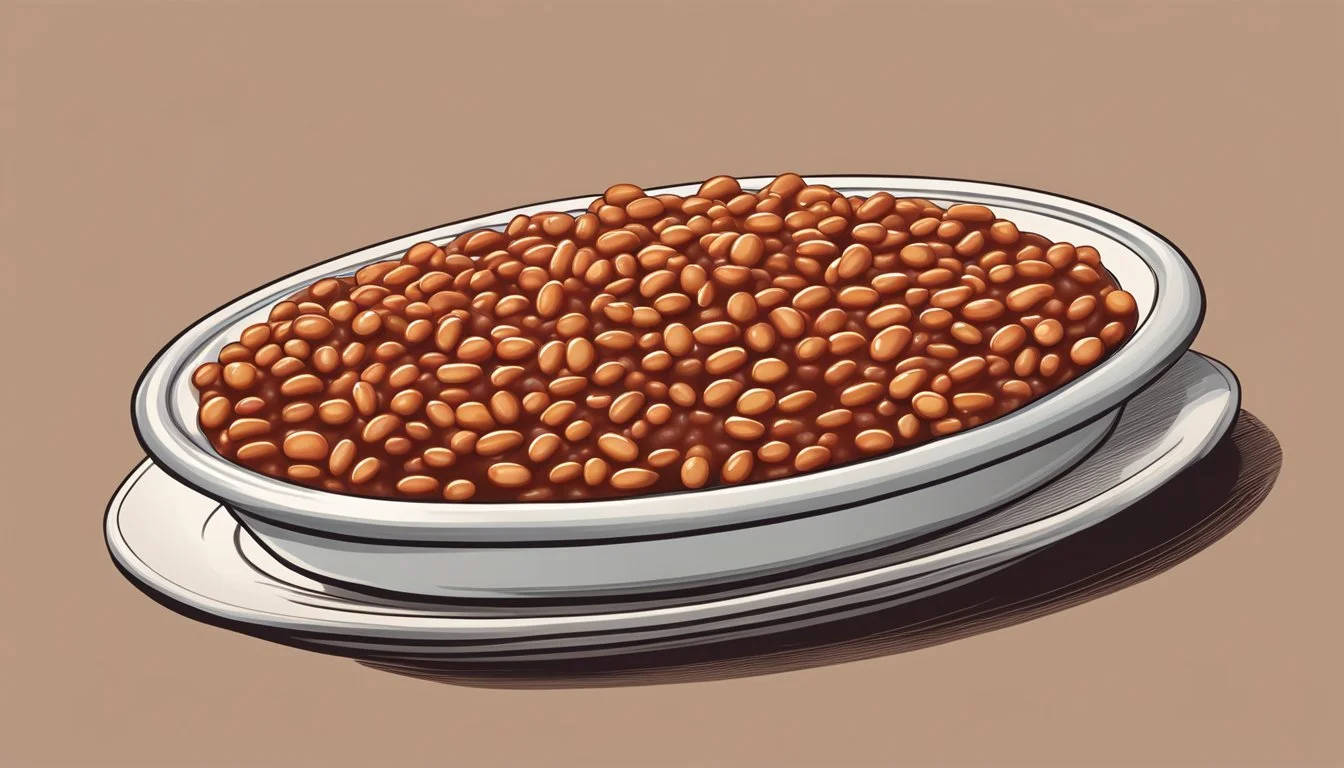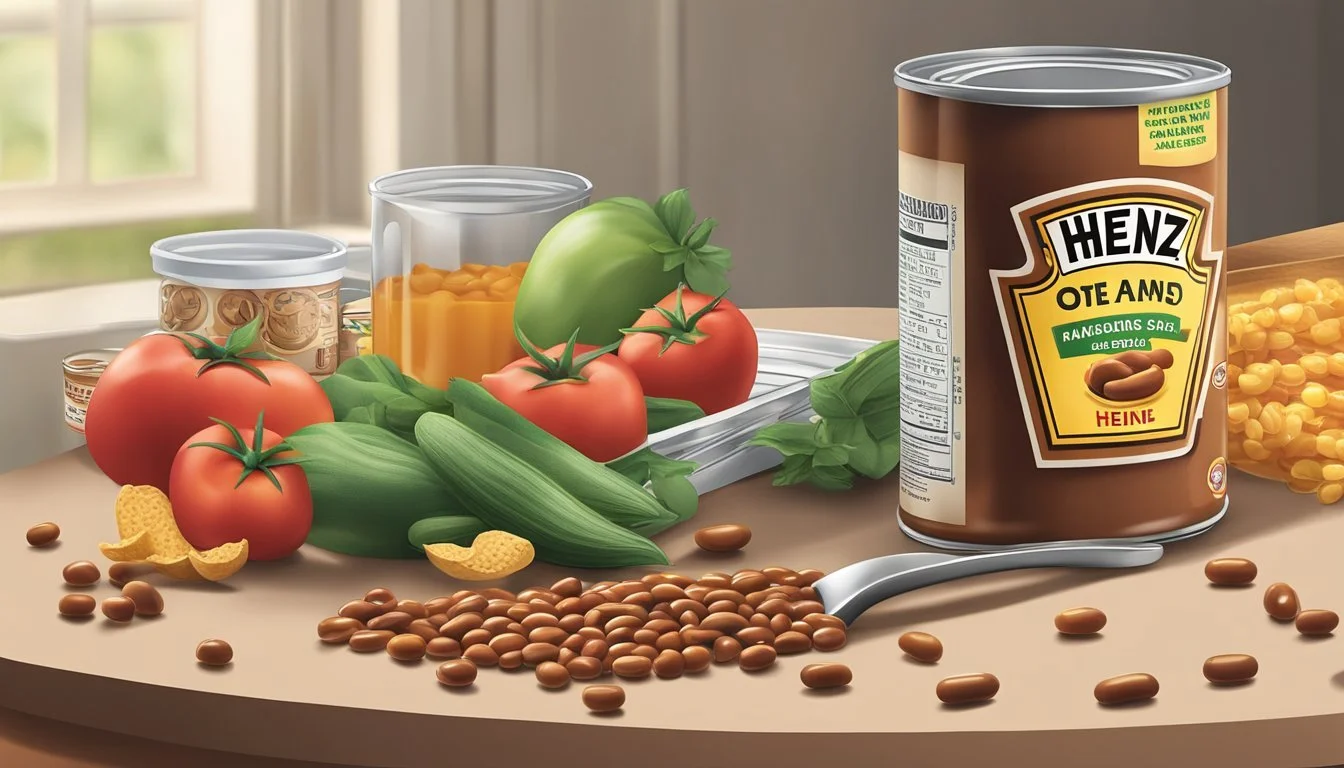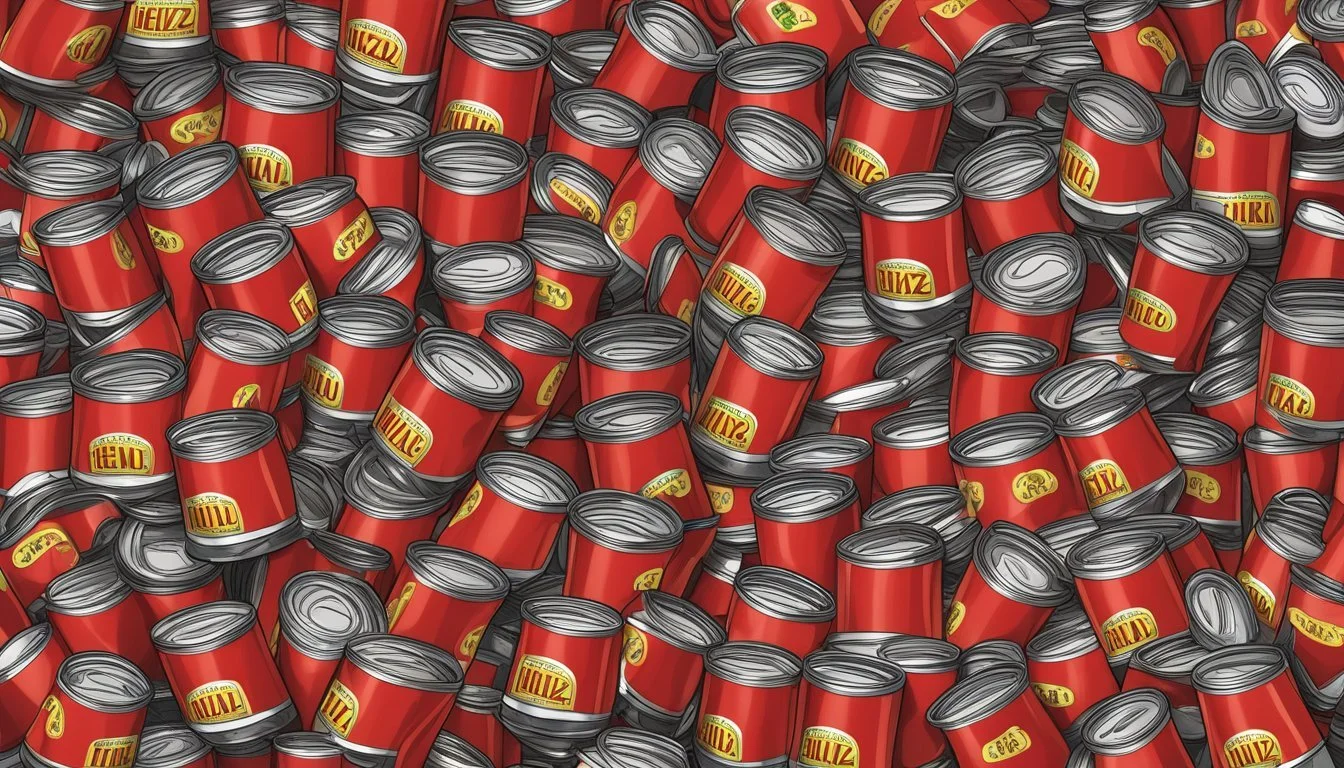How Much Heinz Baked Beans Per Day Is Too Much
Daily Intake Guidelines
Heinz baked beans have been a staple in pantries around the world, often celebrated for their convenience and nutritional value. A good source of plant-based protein and fiber, they contribute to a balanced diet when consumed in moderation. They also provide essential nutrients such as iron and B vitamins, making them a beneficial addition to any meal. However, with convenience foods, there is always the question of how much is too much, particularly considering the added sugars and sodium that can come with canned varieties.
Balancing a daily diet requires careful consideration of nutritional intake, and this includes the consumption of Heinz baked beans. While they can be a part of a healthy diet by contributing to the recommended '5-a-day' fruit and vegetable intake and offering around 20% of the daily recommended protein intake per serving, it's important to take into account the cumulative effects of consuming them in large quantities. The benefits of the nutrients provided by baked beans must be weighed against the potential downsides of overconsumption, which includes increased sugar and sodium intake that could lead to health issues if consumed in excess.
Nutritional Profile of Baked Beans
Heinz Baked Beans are a source of several important nutrients including protein and fiber. They can contribute to a balanced diet when consumed in moderation.
Key Nutrients In Baked Beans
Baked beans provide a bundle of essential nutrients:
Protein: Crucial for muscle repair and growth, baked beans have about 12g of protein per serving.
Fiber: High in dietary fiber, beans help with digestion and can provide about 10g of fiber per serving.
Iron: Iron is key for blood health, with beans offering around 17% of the Daily Value (DV).
Sodium: A concern for heart health, a serving can contain up to 38% DV of sodium.
Potassium: This vital nutrient aids in several bodily functions, and beans can contribute a substantial amount though exact values are often not provided on labels.
Fat: Beans are low in fat, typically including less than 1g per serving, of which saturated fat is usually minimal.
Calories: A serving of Heinz Baked Beans is approximately 130-150 calories.
Sugars: They can contain added sugars, with some varieties having around 20g per serving.
Minerals like magnesium and calcium are also present in smaller amounts, as are various vitamins. Regular Heinz Baked Beans do not typically boast added vitamins, but some micronutrients are inherently available in beans.
Understanding Nutrition Labels
Nutrition labels on Heinz Baked Beans reveal important information, including:
Nutrient Value per Serving % Daily Value* Calories 130-150 - Total Fat Less than 1g 1-6% Saturated Fat 0g 0% Sodium 871mg 38% Total Carbohydrates 54g 20% Dietary Fiber 10g 36% Sugars 20g - Protein 12g - Calcium 86mg 7% Iron 3mg 17%
*Percent Daily Values are based on a 2,000 calorie diet. They help consumers understand how much a nutrient in a serving of food contributes to a daily diet. Sodium (often from added salt), sugars, and the calorie content are critical to monitor, especially for those managing their dietary intake for health reasons. In addition, understanding the ratio of protein, fat, and carbohydrates can help one align with their nutritional goals.
Recommended Daily Intake
The consumption of Heinz baked beans, as part of a balanced diet, should adhere to dietary standards for legume intake and account for personal nutritional requirements.
Dietary Guidelines for Beans
Beans offer significant nutritional benefits including protein and dietary fiber, while being low in cholesterol and trans fat. The American Heart Association suggests incorporating legumes into one's diet several times a week. A single serving size of beans, according to general dietary guidelines, is approximately ½ cup cooked beans. This aligns with the dietary fiber recommendations to consume between 25g to 30g per day for adults.
Protein: Essential for muscle growth and repair.
Dietary Fiber: Supports gut health and regular bowel movements.
Calculating Personal RDI
The recommended dietary intake (RDI) of beans varies from person to person, influenced by factors such as age, sex, weight, and activity level. To calculate an individual's RDI for baked beans, one should consider their overall daily diet. For example, Heinz Baked Beans contain 4.7g of protein and 3.7g of fiber per 100g. If a person's target is 50g of protein and 30g of fiber per day, they could calculate how much baked beans contribute to these goals.
Example Calculation:
Nutrient Target RDI Amount per 100g of Baked Beans Contribution to Target RDI Protein 50g 4.7g Roughly 9% Dietary Fiber 30g 3.7g About 12%
Each individual should ensure that their intake of baked beans complements a balanced diet without leading to excessive consumption of particular nutrients, such as sodium or added sugars.
Health Benefits of Heinz Baked Beans
Heinz Baked Beans are a nutritious staple for many, offering a bevy of health advantages particularly suited for vegetarian diets. They are a robust source of plant-based protein and fiber, both of which play significant roles in supporting gut health and contributing to weight management strategies.
Richness in Plant-Based Nutrients
Heinz Baked Beans are a favorable source of plant-based protein, with approximately 4.7 grams per 100 grams, accounting for 19% of the daily recommended intake. Protein is vital for muscle growth and repair, making it an essential component of a vegetarian diet. Moreover, they deliver valuable minerals such as iron, which is crucial for transporting oxygen in the blood.
Protein Content: 4.7g per 100g
Iron: Essential for oxygen transport
Positive Effects on Gut Health
One can achieve better gut health by incorporating foods that are high in dietary fiber. Heinz Baked Beans contain about 3.7 grams of fiber per 100 grams. Dietary fiber helps promote regular bowel movements and supports a balanced gut microbiome.
Fiber Content: 3.7g per 100g
Gut Microbiome: Supports a healthy balance
Contribution to Weight Loss
The low-fat profile and high fiber content in Heinz Baked Beans can be advantageous for weight loss. Fiber contributes to satiety, the feeling of fullness, which can reduce overall calorie intake. Additionally, the complex carbohydrates in beans are digested slowly, providing a steady source of energy without spikes in blood sugar levels.
Low Fat: Minimal fat content
Satiety: Fiber aids in feeling full longer
Potential Health Concerns
Heinz baked beans, while nutritious, contain elements that raise health concerns if consumed in excess. These concerns center on the high levels of sodium and added sugars.
High Sodium and Sugar Content
Heinz baked beans are known to have a significant sodium content, which could contribute to health issues if consumed in large amounts. High sodium intake is associated with increased blood pressure and a risk of heart disease. Specifically, it's reported that some canned baked beans can contain around 1,000mg of sodium per half-cup serving, which is nearly half of the recommended daily intake. Moreover, baked beans often contain added sugars, elevating the risk for conditions like type 2 diabetes when consumed excessively.
Key Nutritional Concerns:
Sodium: A critical nutrient, but high intake can lead to high blood pressure.
Added Sugars: Contribute to caloric intake without nutritional benefit and can lead to diabetes.
Risks of Overconsumption
The frequent overconsumption of Heinz baked beans can pose risks beyond high blood pressure and diabetes. An excess intake of beans can introduce too many carbs into the diet, which can affect blood sugar levels. Continuous overconsumption could potentially exacerbate conditions like heart disease or complicate management of type 2 diabetes. Additionally, the body might retain extra fluid due to the high sodium content, which can increase blood pressure further.
Key Health Risks:
Heart Disease: Can be worsened by high sodium and sugar diets.
Type 2 Diabetes: Dietary balance can play a role in managing and preventing diabetes.
Blood Pressure: Consuming lower sodium options is essential for maintaining healthy blood pressure.
Culinary Uses of Baked Beans
Baked beans are a versatile staple that can elevate a variety of dishes with their rich, savory-sweet flavor profile. They provide a hearty addition to both traditional and contemporary recipes, and pair exceptionally well with numerous foods.
Traditional and Modern Recipes
Full English Breakfast: Beans are a key component in a classic full English breakfast, served alongside eggs, sausages, and buttered toast.
On Toast: A simple yet tasty British snack involves baked beans served over warm buttered toast.
Modern Twists:
Baked Bean Tacos: Incorporate beans into tacos for a rich, satisfying filling.
Baked Bean Omelette: Elevate your breakfast omelette by adding a spoonful of baked beans for extra flavor.
Pairing with Other Foods
Baked beans blend well with a variety of other foods, providing opportunities to create flavorful combinations. Here are some pairing suggestions:
Food Item Pairing Suggestion BBQ Serve as a side to complement smoky barbecue dishes. Sausages Stir into casseroles or serve on the side. Eggs Add beans to scrambled eggs or use as an omelette filling. Toast Use as a topping for a hearty and quick meal.
Beans complement the richness of sausages and the soft texture of scrambled eggs, and can also add a comforting element to BBQ events.
Varieties of Baked Beans
When discussing the varieties of baked beans, it is essential to consider the types of beans and the range of flavor profiles they embody. Both the choice of beans and additional ingredients contribute significantly to the taste and texture of the final dish.
Different Beans Used in Recipes
The recipes for baked beans commonly include a range of legumes, each bringing its unique qualities to the dish. Navy beans, also known as haricot beans, are traditionally used in canned baked beans, notably in brands like Heinz. Their small size and creamy texture make them ideal for absorbing the flavors of the tomato sauce they're cooked in. Other varieties, such as kidney beans, pinto beans, great northern beans, cannellini beans, and black beans, are also popular options in homemade baked beans recipes. These beans vary in size, color, and taste but generally offer a firmer texture and a more distinct flavor compared to navy beans.
Navy Beans: Small, creamy, used in classic canned baked beans.
Kidney Beans: Larger, robust, often used in chili-flavored baked beans.
Pinto Beans: Medium-sized, known for their earthy flavor and creamy texture.
Great Northern Beans: Larger than navy beans, with a nutty flavor, suit milder baked bean recipes.
Cannellini Beans: White kidney beans, firm and nutty, often found in Italian-style baked beans.
Black Beans: Dark-colored, with a sweet flavor, can be used for a twist on traditional recipes.
Flavour Profiles
Baked beans can have a wide range of flavor profiles, depending on the ingredients incorporated into the tomato sauce base. Molasses gives a deep, sweet flavor that's a staple in many American-style baked beans, while maple syrup introduces a more nuanced sweetness. Mustard adds a tangy kick, enhancing the overall complexity of the dish. Common ingredients such as onions, apple cider vinegar, worcestershire sauce, ketchup, and tomato paste serve as foundational flavors in many recipes, adding acidity, sweetness, and a rich tomato flavor.
Sweet and Tangy: Molasses, maple syrup, apple cider vinegar, ketchup.
Rich and Savory: Tomato paste, worcestershire sauce, onions, mustard.
Both canned baked beans and homemade versions can encompass a spectrum of tastes from sweet and tangy to deeply savory, influenced by the combination of these ingredients. The dish's profile can vary from the classic sweetly flavored cans found in the grocery store to the more complex and varied homemade versions tailored to personal preference.
Safe Consumption Practices
To maintain a healthy diet, it is crucial to understand the appropriate portion sizes of Heinz baked beans and how to integrate them effectively into a balanced daily diet.
Determining Appropriate Portions
Serving Size: A standard serving size for Heinz baked beans is approximately half a cup (130g). This portion provides a good balance of nutrients without contributing excessively to daily calorie intake.
Calorie Count: One serving of Heinz baked beans contains about 90 calories. When considering calorie needs, one should account for the total caloric requirement for their individual daily diet.
Frequency: Incorporating beans as a regular part of a balanced diet is beneficial, but they shouldn't replace other vital food groups. Including legumes like white beans in several meals per week is a good practice.
Incorporating Beans into a Balanced Diet
Nutritional Impact: Heinz baked beans can be an essential part of a balanced diet due to their high fiber and protein content. When one adds them to their diet, they should complement the beans with a variety of other food groups including whole grains, vegetables, fruits, and lean proteins.
Dietary Variety: They should not be the staple food but rather part of a varied diet.
Pairing: To prevent nutrient imbalances, Heinz baked beans should be paired with foods containing essential vitamins and minerals absent in legumes. Balance is key to maximizing the health benefits while minimizing potential digestive discomfort from overconsumption.
Conclusion
Consuming Heinz baked beans can be part of a balanced diet, contributing to regular bowel movements due to their fiber content. They offer important nutrients like important minerals, folic acid, and plant protein. Phytosterols present in these beans can provide health benefits, and the soluble fiber aids in digestive health.
While there is no set limit on how much one should consume, moderation is key. Heinz beans are convenient, but high in sodium and added sugars. Frequent, large intake may lead to excessive calorie consumption and potentially upset the body's nutrient balance.
Individuals should consider their overall dietary needs and consult with a healthcare provider to determine an appropriate serving size. Listening to one's body and its responses to different foods is crucial. Aim for a variety that includes other sources of fiber and protein to ensure a well-rounded nutrient intake.


